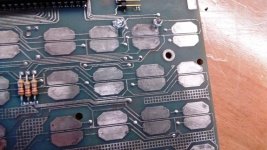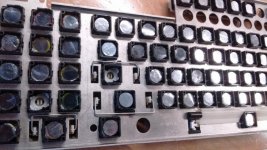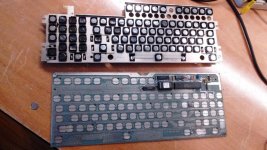VERAULT
Veteran Member
I have been working on my Compaq portable II's capacitive keyboard restoration for 10 months! Im at wits end. I have the right foam, the issue is the capacitive surface/foil. Someone spilled coke on one half the keyboard. IT literally corroded the plastic foil discs down to just clear plastic disks. I have tried Mylar balloons, anti-static bags, foil ( foil definitely does not work!) all to no avail, have about 10-12 keys that I just cannot get working!
Surely im not the only one with this problem, what have you guys done to fix these foam capacities keyboards!
Please help, I have more important things to waste time on than this stupid keyboard!!!!
Surely im not the only one with this problem, what have you guys done to fix these foam capacities keyboards!
Please help, I have more important things to waste time on than this stupid keyboard!!!!



